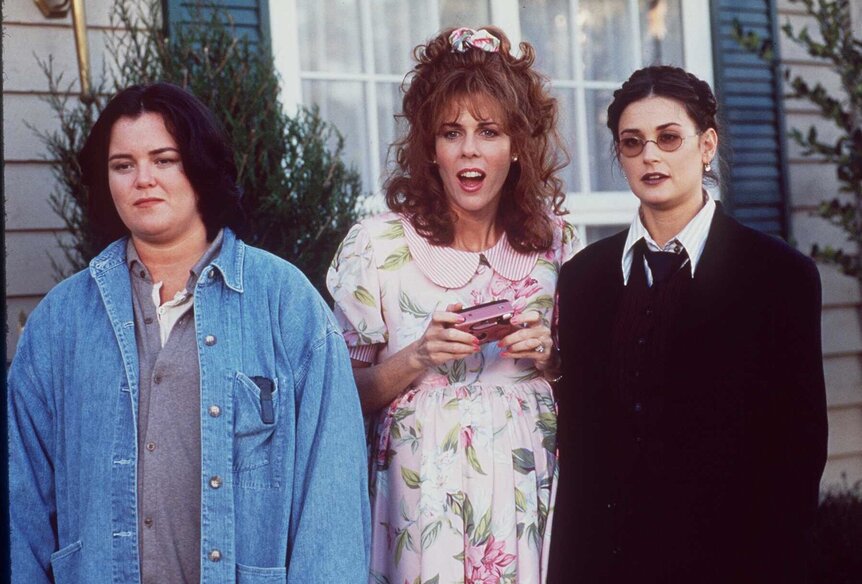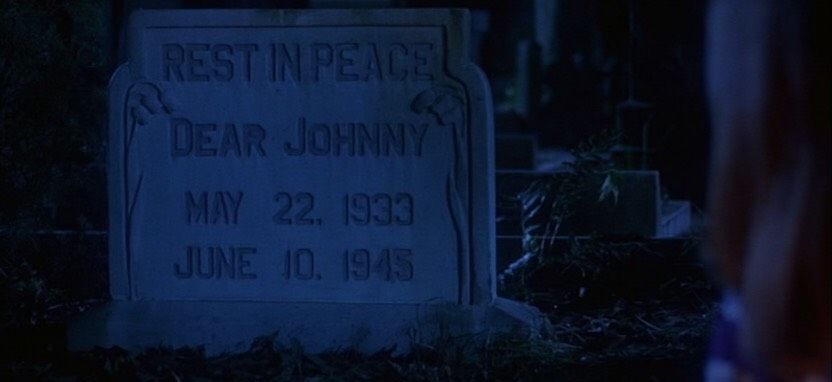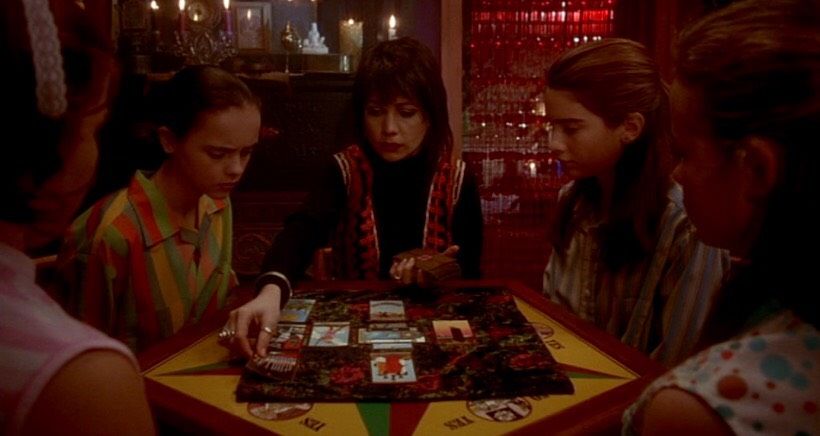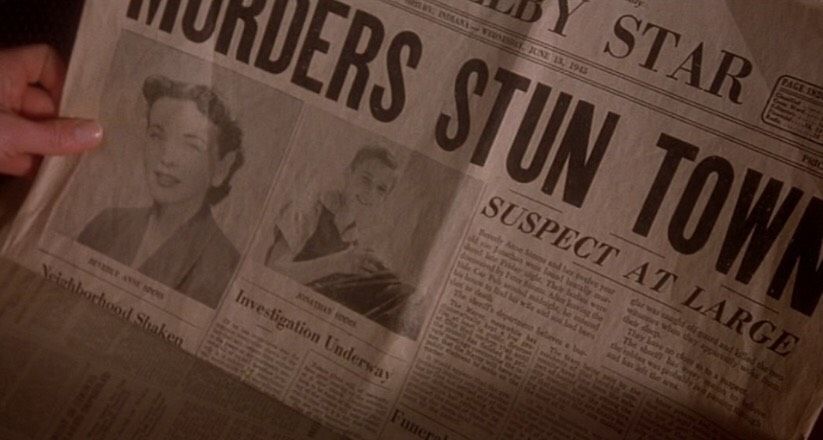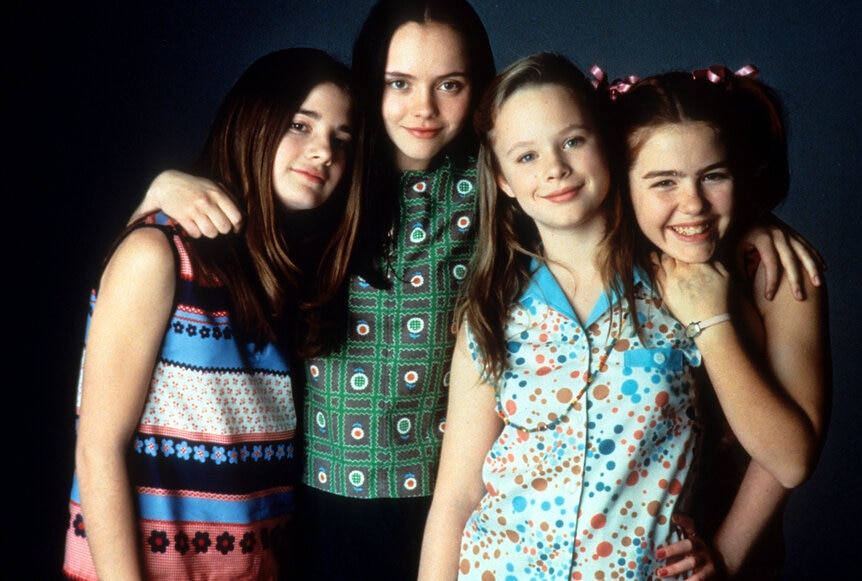Create a free profile to get unlimited access to exclusive videos, sweepstakes, and more!
Now & Then captures the teen obsession of contacting the dead
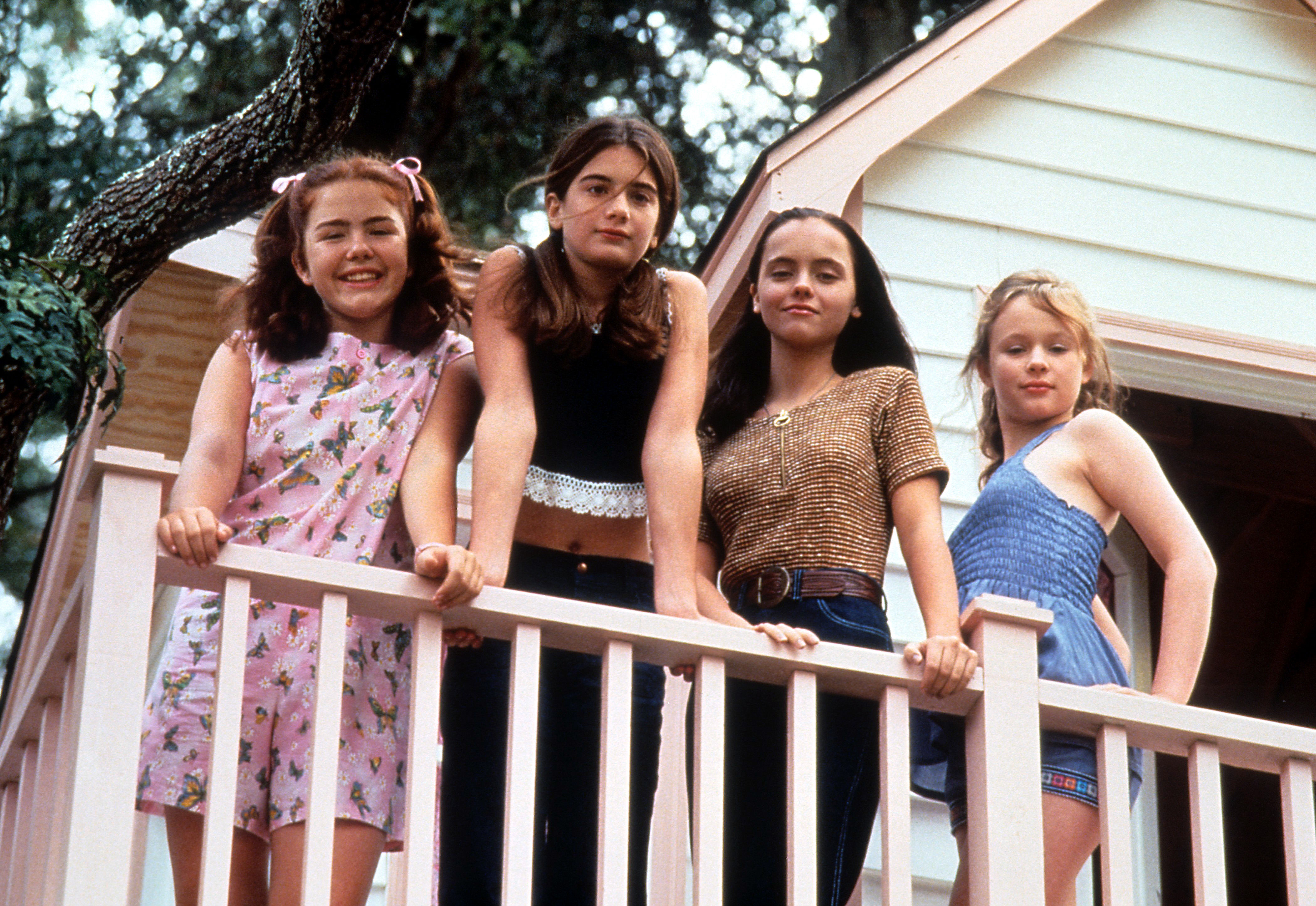
When it was released in the fall of 1995, Now & Then was described by critics as “a contrived Stand by Me kind of story.” Rob Reiner's 1986 adaptation of Stephen King's novella The Body is a coming-of-age tale following a group of four friends on the cusp of adolescence who are dealing with various innocence-shattering events. Distraction is how these tweens attempt to ignore the real tragedies that have plagued their short lives. The boys of Stand by Me are on an adventure to find a dead body on the train tracks. In Now & Then, a girl group of friends is going through similar changes and challenges. A death that occurred 25 years prior provides an escape, and it is easy to see why a comparison is drawn.
But Now & Then shouldn’t get dismissed as just a carbon copy or “the girl version of Stand by Me.” Beneath the schmaltzy star-studded present-day scenes, it captures not only the fears of growing up but the teen obsession with contacting the dead.
Now & Then’s terrible reviews don't mean it isn’t beloved. Now that it's just landed on Netflix, it is a good time to revisit a movie that many fell in love with when it was released. I first watched it on VHS at a friend’s sleepover when I was 14 and instantly connected to the adventure that unfolded. Typically, the movies we picked out at the video store or from our parents’ collections for these birthday hangouts were scarier on the surface than this coming-of-age romp. Memorable examples from my slumber party years feature a lot of Stephen King adaptations, including Silence of the Lambs, It, Carrie, and Children of the Corn. Candyman led to the bravest kids (of which I was not) saying his name five times. Other staples included taped episodes of The X-Files and witchy movies like The Craft.
Ouija boards and seances took place between face masks and movies, as everyone giggled with nervous anticipation. Thoughts of teen magazine horror stories about malevolent spirits getting trapped in the land of the living heightened the tension as we held hands, hoping (or not) someone would hear us.An attempt to contact the dead is central to the premise of Now & Then, which is set in both 1991 and 1970. The present-day scenes bookend the movie, but it is the past that commands our attention. Demi Moore as older Samantha (Gaby Hoffmann plays the younger version) narrates the events of her youth, detailing her fear about being the first person in the neighborhood with divorced parents. It's something she tries to keep from her friends, Roberta (Christina Ricci), Teeny (Thora Birch), and Chrissy (Ashleigh Aston Moore). As a way to block out her dad's departure, her interest in the supernatural provides a distraction. Gathering her friends at the local cemetery, the girls think they have inadvertently caused the spirit of Dear Johnny to get stuck in the land of the living. If they can figure out how Dear Johnny died (or even who killed him), then maybe he can return to where he came from.
This isn’t the first time they have performed a seance, although the targets of the past (including Marilyn Monroe) are a little loftier than a 12-year-old boy in the local cemetery. Earlier that same day, Samantha announces that since it is a full moon, this is the night when the barrier between living and dead can be broken. When the veracity of this statement is questioned, she explains that she read it in the Encyclopedia of Supernatural Phenomenon.Everyone is enthusiastic except Chrissy, the only member of the group who isn’t into the whole ghost obsession. Nevertheless, she isn’t above freaking her friends out when she pretends (rather convincingly) that she can sense a spirit. The seance is interrupted by a sudden summer storm with a bolt of lightning, suggesting Dear Johnny has made contact. Samantha thinks she sees a figure as they flee the graveyard. Later, when a gust of wind wakes her from her slumber, she is convinced it is a spirit and not simply the weather.
It is the summer of 1970, so resources for finding out the truth are limited as the four 12-year-old girls have to cycle to another town to search through the archives. Instead of an actual dead body, they are chasing a ghost. Dear Johnny isn't the only specter looming over the four friends. Boobs, boys, and family friction are all horrors plaguing their girlhood. Roberta is unhappy with her growing chest, and she is still dealing with the death of her mother.While searching the newspaper articles for any clues, Roberta learns her mother’s passing wasn’t as painless as her father had previously described. Instead, she initially survived the car crash, was conscious while she was cut out of her car, and only succumbed to her injuries in the hospital. Parents try to protect their children from the horrors of the world; however, the violence of this very real image haunts Roberta.
Pages have been removed detailing how Johnny and his mother died in 1945, which only suggests a wider conspiracy, fueling their desire to find out more. The girls have several other sources, including the terrifying Willadean (Janeane Garofalo), who works in the local diner. Teeny is convinced Willadean is a witch who has voodoo dolls capable of giving someone a heart attack. She swears she saw the doll with pins stuck in its heart. But they also have enough bravado to go ask the potential witch for a tarot reading.
Of course, the Death card features prominently (pretty much the standard for tarot readings on TV and film), as does the ominous Ten of Swords. We don’t get to hear what Willadean said; instead we get the girls dissecting the so-called look of fear on Willadean’s face.
Hints of Stephen King’s It weave their way throughout this movie, but instead of being plagued by a killer clown, the horrors are not supernatural. The town of Shelby is considered safe and boring, but as with the fictitious Derry, it can’t escape the evils of the outside world. Instead of Pennywise, this is a good old-fashioned burglary-gone-wrong. On the Halloween Unmasked podcast, John Carpenter spoke of two overarching types of scary stories detailing who the "monster" is. One comes from the outside and the other from within, and Carpenter notes that “Right-wing evil is always outside, it’s them.” Johnny and his mother were killed by someone who law enforcement believe was passing through town, and the culprit was never caught. This is very much the fear of the Other. Not only did the killer destroy a family, but he also robbed the town of its sense of safety. Bad things can happen in sleepy Shelby. This is, of course, an oversimplification of the situation, but these murders are a stand-in for the mid-20th-century loss of innocence, which occurred at the end of World War II. A dual function is achieved, as it is coupled with these girls learning the cold hard facts of life. Sometimes bad things happen and you can’t do anything to stop it.Control is a big reason as to why watching horror movies and attempting to contact the dead at sleepovers are common rites of passage. These scares are at a safe distance, allowing us to experience the exhilaration and adrenaline with none of the real-world consequences. Well, unless you somehow end up with spirit trapped in the land of the living. If you say “Candyman” five times, a killer is not going to jump out no matter how much you think it could happen. An interest in spirits and ghosts is not confined to adolescent sleepovers, but the fascination with mortality is certainly something I was preoccupied with at this age. In Now & Then, Roberta fakes her death after performing a reckless act. She pretends she has drowned in a prank-gone-too-far, which Samantha (as Demi Moore) suggests is her way of coping (or rather, not coping) with her mother’s death.
Not everything is a nightmare; it is worth noting that the burgeoning romance has a very important moment demonstrating consent, as Scott (Devon Sawa) asks if he can kiss Roberta before moving in for the smooch.
In another moment echoing King, Samantha drops a bracelet that Teeny has given her down a storm drain. Teeny’s yellow raincoat has echoes of Georgie's from It, but the only thing that makes Samantha scream when she climbs down to retrieve the trinket is a rat. Being grossed out by rodents turns to a very real fear that Samantha is going to drown when the rain starts pouring down. The man they call “Crazy Pete” (Walter Sparrow) comes to the rescue and, in one of the most heavy-handed scenes, he asks why the girls are scared of him. Pete’s story is a tragic one, as it was his wife and son who were murdered back in 1945. He only comes out at night because he doesn’t think anyone wants to be reminded of this terrifying event.The true horrors in Now & Then aren’t clowns in drains or ghosts in graveyards; instead, it is the seemingly random acts of violence or deaths that make no sense. It is the realization that our parents aren't perfect and neither are their relationships. In Now & Then, the supernatural ends up being a source of comfort and distraction. Sure, it might follow a similar path to Stand by Me, but as a teen watching this movie, it meant something to see a group of girls on an adventure like this.
It is the perfect sleepover movie, for then and now.
The views and opinions expressed in this article are the author's, and do not necessarily reflect those of SYFY WIRE, SYFY, or NBC Universal.
